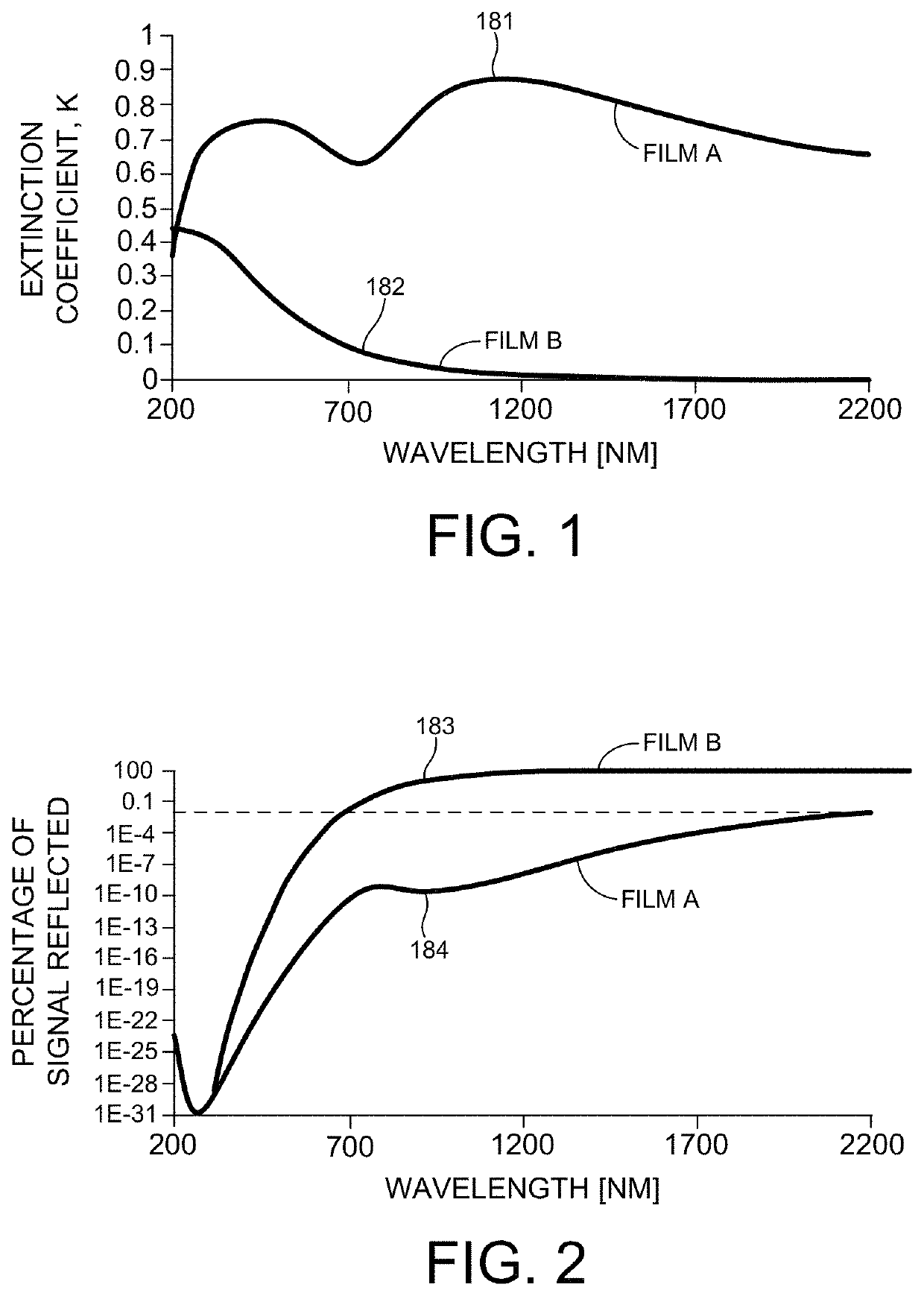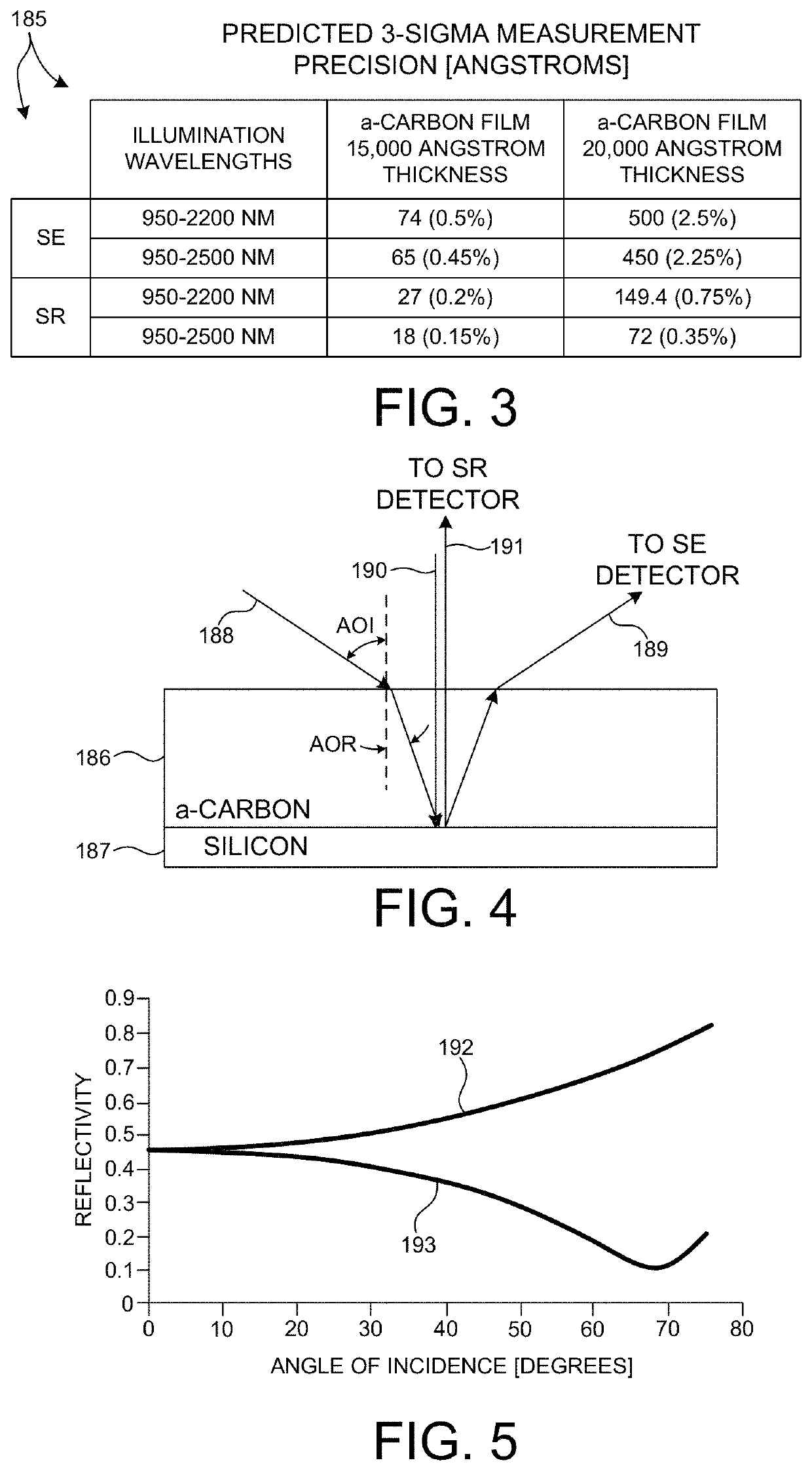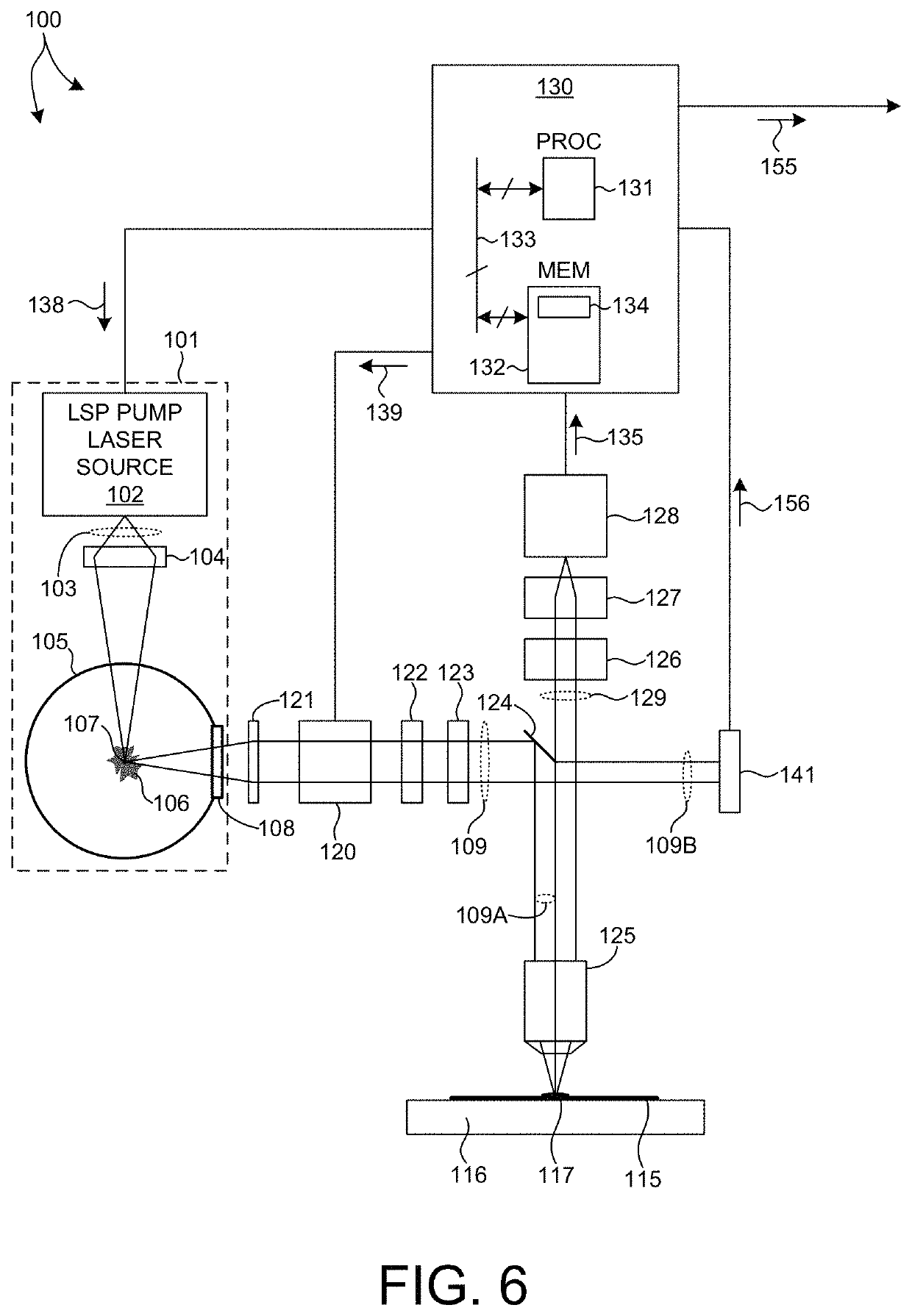Mid-infrared spectroscopy for measurement of high aspect ratio structures
a high aspect ratio and structure technology, applied in the field of metalrology systems and methods, can solve the problems of many available high-throughput metrology techniques that cannot reliably perform cd and film measurements of high aspect ratio structures, and many optical techniques suffer from low signal-to-noise ratios (snrs), so as to reduce the need for external liquid nitrogen supply and handling equipment, high aspect ratio, and high throughput measurement
- Summary
- Abstract
- Description
- Claims
- Application Information
AI Technical Summary
Benefits of technology
Problems solved by technology
Method used
Image
Examples
Embodiment Construction
[0033]Reference will now be made in detail to background examples and some embodiments of the invention, examples of which are illustrated in the accompanying drawings.
[0034]Methods and systems for performing high throughput spectroscopic measurements of semiconductor structures at mid-infrared wavelengths are presented herein. In one aspect, a semiconductor metrology system includes a Fourier Transform Infrared (FTIR) spectrometer suitable for high throughput measurements of high aspect ratio semiconductor structures. In some embodiments, an FTIR spectrometer including one or more measurement channels spanning a wavelength range between 2 micrometers and 20 micrometers is employed to perform measurements of semiconductor structures. The one or more FTIR measurement channels are operable in parallel (i.e., simultaneous measurement of the sample throughout the wavelength range) or in sequence (i.e., sequential measurement of the sample throughout the wavelength range).
[0035]In a furt...
PUM
| Property | Measurement | Unit |
|---|---|---|
| wavelengths | aaaaa | aaaaa |
| size | aaaaa | aaaaa |
| wavelength range | aaaaa | aaaaa |
Abstract
Description
Claims
Application Information
 Login to View More
Login to View More - R&D
- Intellectual Property
- Life Sciences
- Materials
- Tech Scout
- Unparalleled Data Quality
- Higher Quality Content
- 60% Fewer Hallucinations
Browse by: Latest US Patents, China's latest patents, Technical Efficacy Thesaurus, Application Domain, Technology Topic, Popular Technical Reports.
© 2025 PatSnap. All rights reserved.Legal|Privacy policy|Modern Slavery Act Transparency Statement|Sitemap|About US| Contact US: help@patsnap.com



